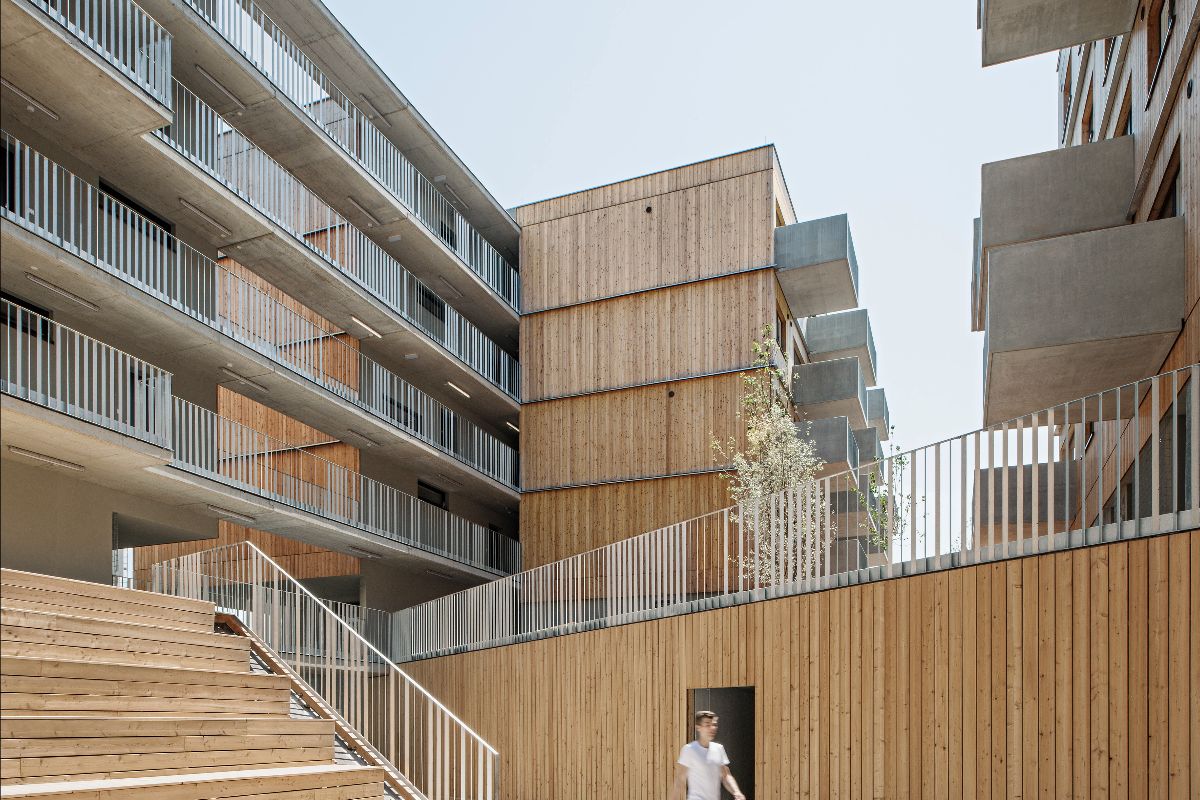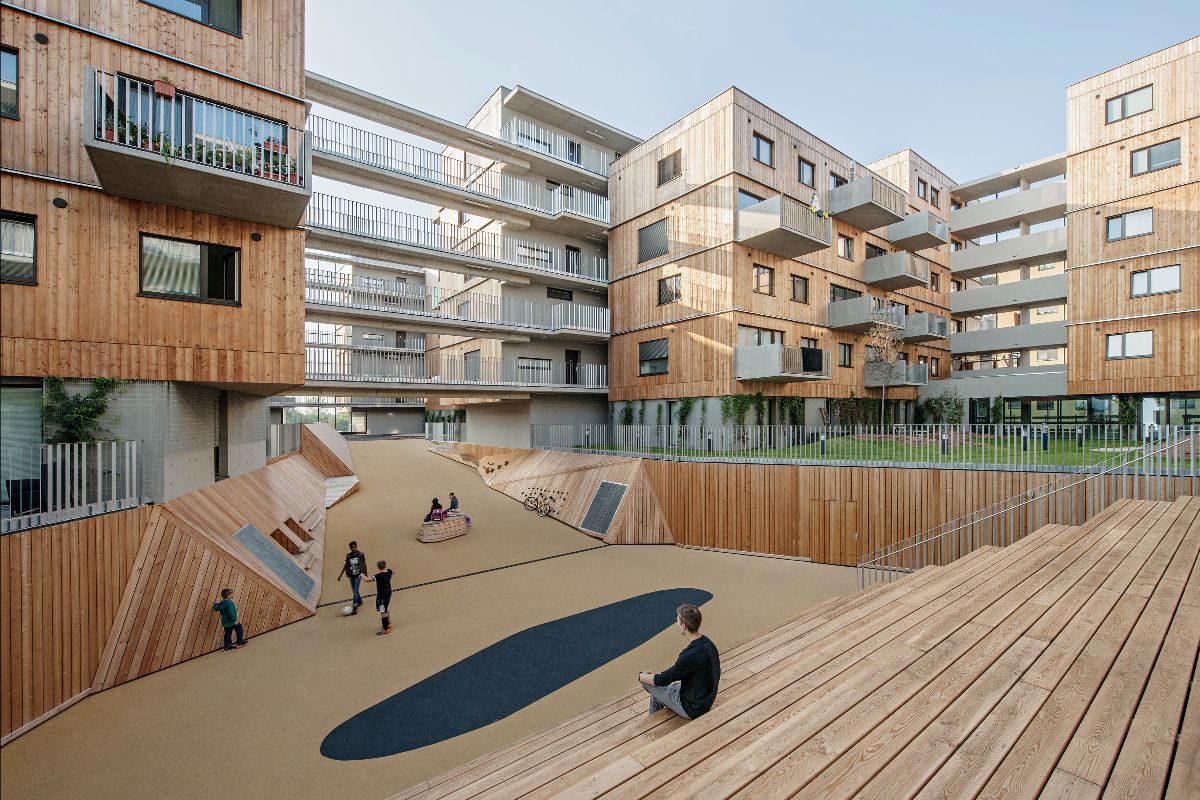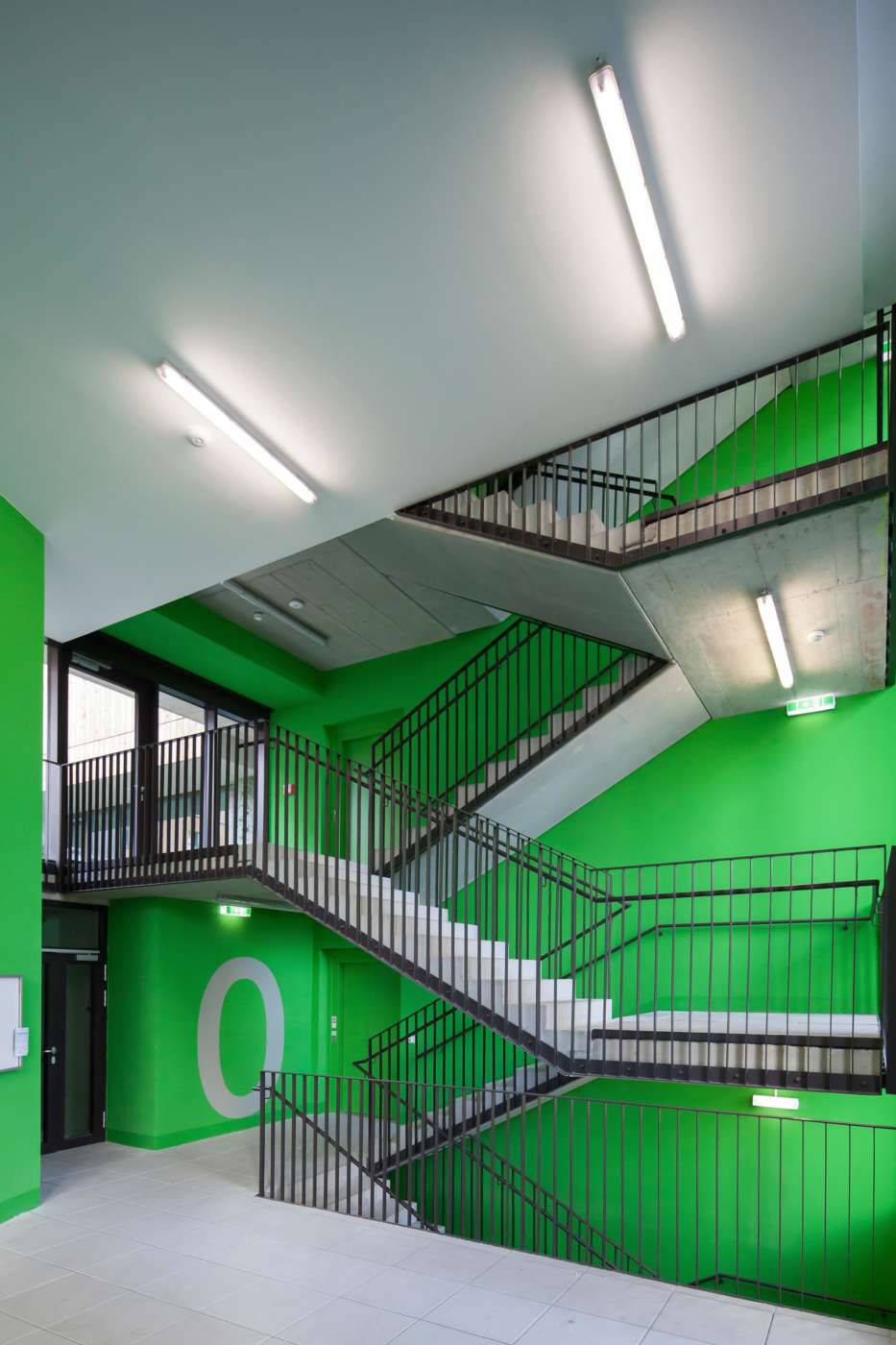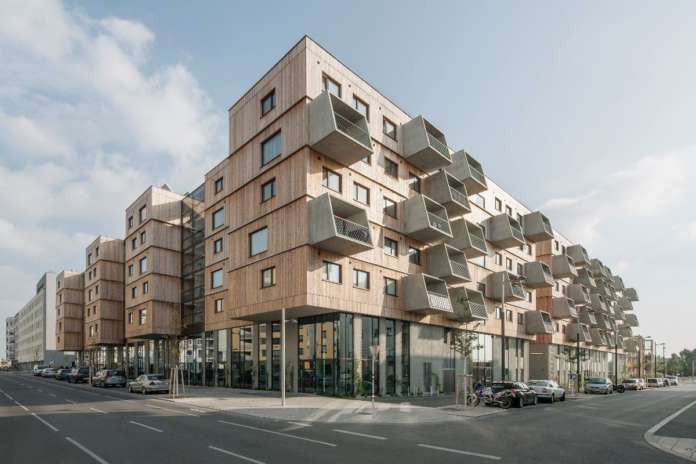A sequence of parallel building volumes differentiated in terms of scale utilises the large building plot D12 in the south-eastern part of the Seestadt Aspern. The complex, designed by Berger+Parkkinen in collaboration with querkraft architekten, with a total of 213 apartments and eight shops apparently consists of a group of clearly recognisable individual timber houses in the form of slender, compact individual volumes. The staggered layout creates different kinds of courtyard-like spaces and a variety of visual relationships. The various parts are connected to each other by three rows of access decks that run in a north-south direction. These three circulation routes offer a varied spatial experience provided by a sequence of light-flooded staircases, internal corridors and open access decks onto which communal terraces are docked. The serial, linear basic structure offers great flexibility in laying out very different types of apartment and consequently allows a good mix of residents. The apartment floor plans are conceived flexibly. They can be altered later in a variety of ways. Although they have an excellent energy balance the buildings still open generously to the outside. Combined with the use of timber as a construction material this gives the entire complex both lightness and depth.

The housing complex is articulated into seven building parts ranging in height from four to seven floors above ground level and an underground garage. The strong articulation of the building volumes creates a lively, south-facing open space that offers a variety of spatial relationships. The inner courtyard is a semi-public zone that forms the common heart (canyon) of the complex, which is connected to the pedestrian zone and is surrounded at ground floor level by the communal rooms. What is known as the canyon, an area with several changes of level and seating steps at the heart of the complex, offers all the residents an opportunity to meet there and experience community. It serves as an encounter space and a playing area for young people. At places the wooden cladding lining the walls of the ramp grows out of the wall and forms sloping surfaces to lean against or clamber up. Large horizontal surfaces are connected with the wall and form areas to lie on or to use in different ways. Together with a number of grassy hillocks the green courtyards with wing-shaped terraces that deliberately project into the middle of the central courtyard form an organic landscape. Hills, trees and shrubs with small crowns screen the private terraces. The network of paths leading through the hilly landscape is deliberately restricted to prevent the development of corridor-like routes. Meeting places are formed at junctions in front of entrance areas, laundries and the playground for small children.

The articulation of the façade is continued in places as ground marking, at the entrance areas it becomes denser and articulates the zone in front of the shops and businesses with street furniture. This introduces life to the front area with, for example, outdoor seating for customers. Raised beds of shrubs not enclosed by fences together with strips of lawn form a buffer in front of the studio apartments. Generously sized areas are cut out of this buffer to provide access or to create spaces in which to spend time. The highly insulated external walls are built of wood. These prefabricated wooden walls are produced in the factory at an ensured high level of quality using native wood and wood-based materials, with stone wool as insulation. In the façades wood is evident in the form of larch boarding.

The party walls and internal partition walls were also produced in the factory, where they were prepared to accommodate the building services. Thanks to the high level of prefabrication and speedy assembly on site the impact on the environment as well as the amount of noise, dust and fumes can be minimised.
The concrete frame allows freedom in designing the façade and permanent flexibility in the floor plans. All the ducts are concentrated in a clearly defined zone of ancillary spaces beside the circulation. The central positioning of the services shaft allows the apartment types to be mirrored from floor to floor. The appearance of the façade is structured by projecting prefabricated loggias and balconies; the façade develops into a freely played game.

Project Sheets
Landscape architecture: idealice
Structural consultant: Lackner+Raml
Building services: TB Obkircher
Construction physics: Holzforschung Austria
Fire protection: BrandRat
Timber structure: LC Buildings
Rainwater management: Schattowitz
Building contractor: Porr Bau
Timber structure: Weissenseer
Dwelling units: 213
Apartments sizes: 42-110 mq
Usable residential floor area: 14,680 mq
Commercial floor area: 1,009 mq
Gross floor area agl.: 17,000 mq
Gross floor area: 37,439 mq
Net floor area: 33,375 mq
Main usable area: 15,689 mq
Building footprint:3,783 mq
Building plot: 7,731 mq
Bike parking: 491
Parking spaces: 413






